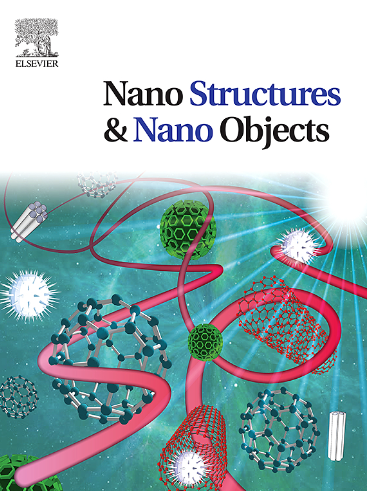Nanostructure formation on Ti-Nb alloys promote better surface properties designed for biological applications
IF 5.45
Q1 Physics and Astronomy
引用次数: 0
Abstract
Anodizing was employed to produce organized TiO₂ nanotubular structures (NTs) on two titanium alloys: Ti-15Nb (TN15), which exhibits both bcc and hcp crystal structures (α′ + β phases), and Ti-40Nb (TN40), characterized by a stable β phase. The electrochemical treatment was conducted under different potentials (10 V and 20 V) and durations (1 h and 2 h). Following anodization, samples underwent thermal treatment to transform the initially amorphous NT layers into crystalline phases. X-ray diffraction (XRD) confirmed the amorphous nature of the as-anodized surfaces, which crystallized into anatase and rutile phases after heating. Structural and microstructural features were analyzed via XRD, scanning electron microscopy (SEM), and atomic force microscopy (AFM), which were used to assess surface roughness, NT length, and diameter. Wettability and surface free energy were evaluated using the sessile drop contact angle method. This study investigates how anodization parameters and alloy composition affect the crystallinity, morphology, and surface properties of TiO₂ NTs. TN15 samples exhibited α-phase Ti with a mix of anatase and rutile, while TN40 samples showed dominant β-phase Ti and greater rutile content. NTs on TN15 were more uniformly aligned, whereas TN40 formed NTs in isolated domains. Longer anodization times and higher voltages increased NT length and diameter. Notably, surface wettability improved with greater anatase content—particularly in TN15–2h-10V (contact angle ∼7°)—highlighting the influence of Nb content, anodization conditions, and heat treatment on tuning NT functionality for biomedical applications.
纳米结构在Ti-Nb合金上的形成促进了更好的表面性能设计用于生物应用
采用阳极氧化法在Ti-15Nb (TN15)和Ti-40Nb (TN40)两种钛合金上制备了有组织的tio2纳米管结构(NTs): Ti-15Nb具有bcc和hcp两种晶体结构(α′+ β相),Ti-40Nb具有稳定的β相。在不同电位(10 V和20 V)和时间(1 h和2 h)下进行电化学处理。阳极氧化后,样品经过热处理,将最初的无定形NT层转变为结晶相。x射线衍射(XRD)证实了阳极氧化表面的无定形性质,加热后结晶为锐钛矿和金红石相。通过x射线衍射(XRD)、扫描电镜(SEM)和原子力显微镜(AFM)分析了结构和微观结构特征,并利用这些特征评估了表面粗糙度、NT长度和直径。采用固滴接触角法对其润湿性和表面自由能进行了评价。本研究探讨了阳极氧化参数和合金成分对二氧化钛纳米管结晶度、形貌和表面性能的影响。TN15样品以α相Ti为主,夹杂锐钛矿和金红石;TN40样品以β相Ti为主,金红石含量较高。TN15上的nt排列更加均匀,而TN40上的nt在孤立的结构域形成。较长的阳极化时间和较高的电压增加了NT的长度和直径。值得注意的是,随着锐钛矿含量的增加,表面润湿性得到改善,特别是在TN15-2h-10V(接触角~ 7°)中,这突出了Nb含量、阳极化条件和热处理对生物医学应用中调整NT功能的影响。
本文章由计算机程序翻译,如有差异,请以英文原文为准。
求助全文
约1分钟内获得全文
求助全文
来源期刊

Nano-Structures & Nano-Objects
Physics and Astronomy-Condensed Matter Physics
CiteScore
9.20
自引率
0.00%
发文量
60
审稿时长
22 days
期刊介绍:
Nano-Structures & Nano-Objects is a new journal devoted to all aspects of the synthesis and the properties of this new flourishing domain. The journal is devoted to novel architectures at the nano-level with an emphasis on new synthesis and characterization methods. The journal is focused on the objects rather than on their applications. However, the research for new applications of original nano-structures & nano-objects in various fields such as nano-electronics, energy conversion, catalysis, drug delivery and nano-medicine is also welcome. The scope of Nano-Structures & Nano-Objects involves: -Metal and alloy nanoparticles with complex nanostructures such as shape control, core-shell and dumbells -Oxide nanoparticles and nanostructures, with complex oxide/metal, oxide/surface and oxide /organic interfaces -Inorganic semi-conducting nanoparticles (quantum dots) with an emphasis on new phases, structures, shapes and complexity -Nanostructures involving molecular inorganic species such as nanoparticles of coordination compounds, molecular magnets, spin transition nanoparticles etc. or organic nano-objects, in particular for molecular electronics -Nanostructured materials such as nano-MOFs and nano-zeolites -Hetero-junctions between molecules and nano-objects, between different nano-objects & nanostructures or between nano-objects & nanostructures and surfaces -Methods of characterization specific of the nano size or adapted for the nano size such as X-ray and neutron scattering, light scattering, NMR, Raman, Plasmonics, near field microscopies, various TEM and SEM techniques, magnetic studies, etc .
 求助内容:
求助内容: 应助结果提醒方式:
应助结果提醒方式:


